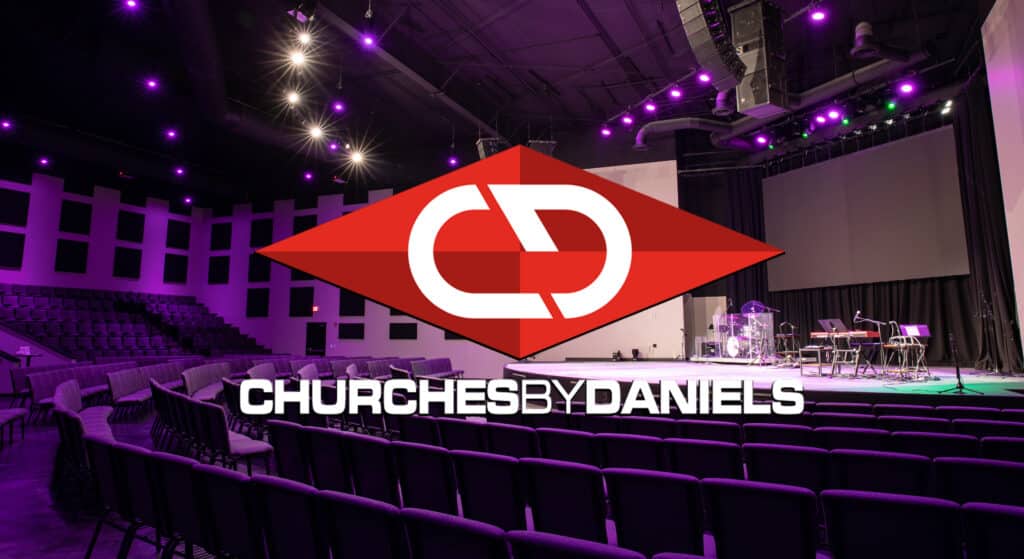Regardless of the scope of your project, it can be difficult to know how to start. We work with hundreds of churches each year on everything from minor improvement projects to major purchase and construction projects.
In partnering with these churches, we have found the following seven steps to be instrumental to a successful project.
1. Let Ministry Be Your Foundation
Before you even break ground on your new project, take a step back and consider: who are you as a church, what has God called you to do, and how should that calling shape your facilities?
Every church is unique in their personality, culture, calling, and ministries. Plan through the filter of the who, what, and how.
Always let ministry need drive the process. Psalm 127 is very clear in this, “Unless the Lord builds the house, its builders labor in vain.”
2. Consider All Your Resources
Beyond your ministry needs, focus on fitting your project into your expected budget. A project that is out of control financially can be devastating to the ministries of a church.
Every project should be planned and designed in a way that maintains adequate resources for the ministries of the church.
Remember that resources extend beyond the dollars spent to include time, energy, and the ability for your staff and pastors to focus. Factor in more than just the financial cost of the project.
3. Understand Your Areas of Funding
Church project funding usually comes from three sources: money you have, money you raise, and money you borrow.
It is essential to the continuity of your ministry that you keep your project within the confines of your source funds.
4. Carefully Count the Cost
It is important to go through careful cost planning so you can stay within your construction budget as much as possible.
Jesus spoke to this in Luke 14:28 when He said, “Which of you, desiring to build a tower, does not first sit down and count the cost, whether he has enough to complete it?”
Construction costs are generally organized into divisions – concrete, lumber, doors, etc. It is important to accurately budget for each division.
Underestimating the value of a division, overspending in one or more divisions, missing a division altogether, or making unplanned changes to a project are four of the most common reasons a project exceeds its budget.
As you sit down to determine the cost, consider the three main categories of expenses: hard costs (construction labor and material), soft costs (professional services, fees, permits, etc.), and FFE costs (furniture, fixtures, and equipment).
Building projects often exceed the construction budget because the soft and FFE costs are not considered into the equation. As a best practice, estimate the soft and FFE costs first, and then design the project around the remaining budgeted hard cost amount.
5. Know Your Parameters
What are your limitations? Funding, land use and size, building coverage, budget, etc. Define your limits and plan your project within those parameters.
When purchasing land or building a new building, a civil engineer should be one of the first people you consult. A civil engineer will identify the development parameters of a site.
Also discuss your project with a lending institution. They will help determine your financial parameters in regards to debt capacity.
A stewardship or capital campaign consultant can help you estimate how much you can raise. Keep in mind that the campaign funds you receive are typically a smaller percentage than the originally pledged funds and are generally submitted over a two to three year period.
Finally, a local contractor can usually advise on construction cost per square foot factors in your area. (These estimates should only be used as a guide and not a true determination of cost.) Be realistic about the funding you will have in hand and take that into consideration as you define your parameters.
Once your parameters are determined, refine the scope of the project until it fits within your limits. This process will help guide your project towards a successful end.
6. Phase Your Master Plan
God approached creation very systematically and intentionally, completing the work in six “phases.” He also completed each phase in a day, had an unlimited budget, and didn’t have building inspectors to deal with, but that’s another story.
The point is, a master plan ensures that you eventually complete everything necessary (like all of creation), while phasing allows you to systematically and intentionally complete it one step at a time (each of the six days).
To that end, develop your master plan by identifying the best use for your property and facilities according to your ministry needs. Then break your master plan into attainable steps.
Each phase should be somewhat self-contained so that you have realistic and affordable steps that fit within your currently defined parameters. Phasing in this way will make your project easier to fund and manage as you work towards completing your master plan.
7. Count the Cost Again
In the beginning stages of planning and design, it is common for a project to seem a bit out of focus and vague. Rather than concerning yourself with fully understanding the outcome, focus instead on counting the cost as accurately as possible.
Make sure to cushion your budget with a contingency factor for unforeseen costs. Keep revisiting your budget and making necessary adjustments as details of your project are defined.
Even after the blueprints are complete, the contracts are signed, and construction is underway, the cost to complete your project should always be monitored relative to your available funding.
Your facilities are an important tool for you to accomplish what God has called you to do. By following these seven steps, you will be well on your way to a smoother project.
Proper planning for your project will enable you to reap the benefits and grow your ministry without compromising the stability of your organization.
This information is courtesy of AG Financial Solutions, which is committed to resourcing churches and ministries and furthering Kingdom growth. They offer products and services competitive with the finest for-profit financial institutions in the country—all while aligning with your core faith values, www.agfinancial.org.









